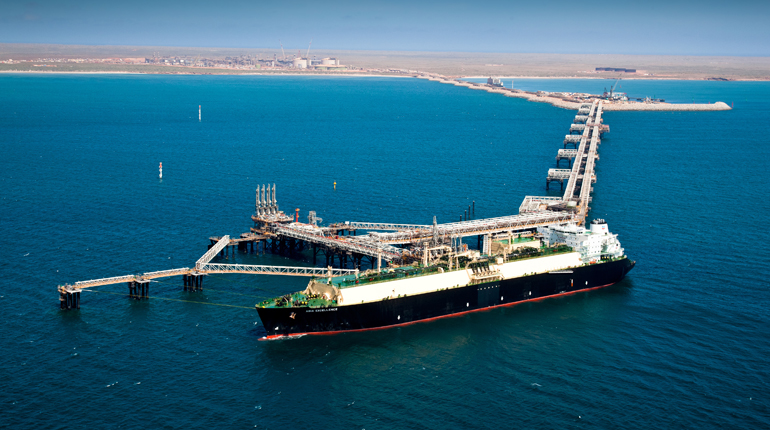 BG’s Methane Kari Elin delivering LNG to Singapore’s terminal. (BG Group)
BG’s Methane Kari Elin delivering LNG to Singapore’s terminal. (BG Group)
Half of Asia’s LNG supply could be sourced via the spot market by 2020, according to a senior executive for the Singapore Exchange (SGX).
Speaking to Interfax Natural Gas Daily, Cheong Jin Yu, director of power and gas at the SGX, said the development of an Asian LNG hub would create a more robust spot market.
Jin’s prediction looks optimistic given just 5% of Asian trade last year came through the spot market, but he pointed to recent developments that suggest the figure is about to soar.
China National Offshore Oil Corp. offloaded two LNG cargoes last year that it was obligated to buy under long-term contracts. Jin expects this type of activity to become more commonplace in the future. Such moves will increase spot market trading.
Buyers traditionally tied to long-term contracts will increasingly turn to the spot market to offload volumes, he said. In addition, many new LNG projects will not contract all of their cargoes and will place uncontracted LNG on the spot market, noted Jin’s colleague Adrian Lunt, head of commodities research at the SGX.
Lunt said a growing spot market, coupled with the trend for shorter-term contracts, would cause greater convergence between spot and contract prices.
LNG prices have fallen from the record highs of just two years ago, largely tracking the plunge in global oil prices. Spot LNG prices in Asia have dropped from $20/MMBtu in February 2014 to only $4/MMBtu for cargoes to be delivered in June 2016.
Oil indexation
The majority of long-term contracts held by Asian buyers are oil indexed. This means prices have fallen in line with the oil price, but because prices are based on average import figures over previous months and include S-curves and floor prices they will never be as responsive to market conditions as the spot market. The average import price of LNG into major Asian economies was more than $7/MMBtu in February.
Asian buyers will want to hedge the risk of oil prices rising again and are looking for greater diversity in contracts. They will also be aiming to make use of the spot market to get the lowest-cost imports.
Debate at last week’s LNG18 conference in Perth centred on the development of a more robust spot market as well as the future of LNG pricing mechanisms. Lunt told Interfax Natural Gas Daily the rise of spot trading does not necessarily spell the end for oil indexation.
"People still want to link [LNG] to oil. It is important to dispel the myth that indexation and long-term contracts cannot co-exist – they can," Lunt said.
The oil indexation model was developed to ensure LNG producers could sign long-term offtake agreements needed to fund capex-intensive LNG projects. However, as more LNG supply enters the market, buyers are less likely to sign such contracts and are turning to short-term deals of one to five years and pure spot market plays – particularly in the Asia Pacific region.
"It was also indicated at the conference that increasing LNG tonnage could be linked to US-based Henry Hub pricing moving forward, but one problem is that it would be dictated by the short-term scenario," Lunt said.
"However, our analysis indicates this makes little sense for anything other than an interim step in a longer-term transition to genuine LNG pricing. Firstly, the Henry Hub remains a largely domestic-centric price which is unlikely to encapsulate Asian LNG supply-demand fundamentals."
Lunt added that, with the United States essentially becoming a swing supplier of LNG, an independent LNG benchmark is necessary for such a dynamic to function efficiently. "If both domestic US gas and international LNG are priced off the Henry Hub, then how does the market swing? It doesn’t work well."
Jin said oil and LNG prices have decoupled and LNG would benefit from less oil indexation. "So the question we heard is what price would you use, and we said that the SLInG price is the logical and representative Asian LNG pricing mechanism."
In January, the SGX launched futures and swaps linked to SLInG, its spot price index for LNG traded in Asia. SLInG is short for free-on-board Singapore SGX LNG Index Group. Average weekly assessments gathered from producers, consumers and traders in the physical LNG market determine final settlements for the contracts.
LNG production is booming as Asian demand flags. Last year, global LNG output reached 250 mt – a new high – according to energy consultancy Wood Mackenzie. The glut is projected to continue well into the next decade as more supply, mostly from new export facilities in Australia and the US, enters a saturated market. This increased output comes amid weakened LNG demand growth, particularly from Japan and South Korea, the world’s top two LNG importers.







Talk to us
Natural Gas Daily welcomes your comments. Email us at [email protected].